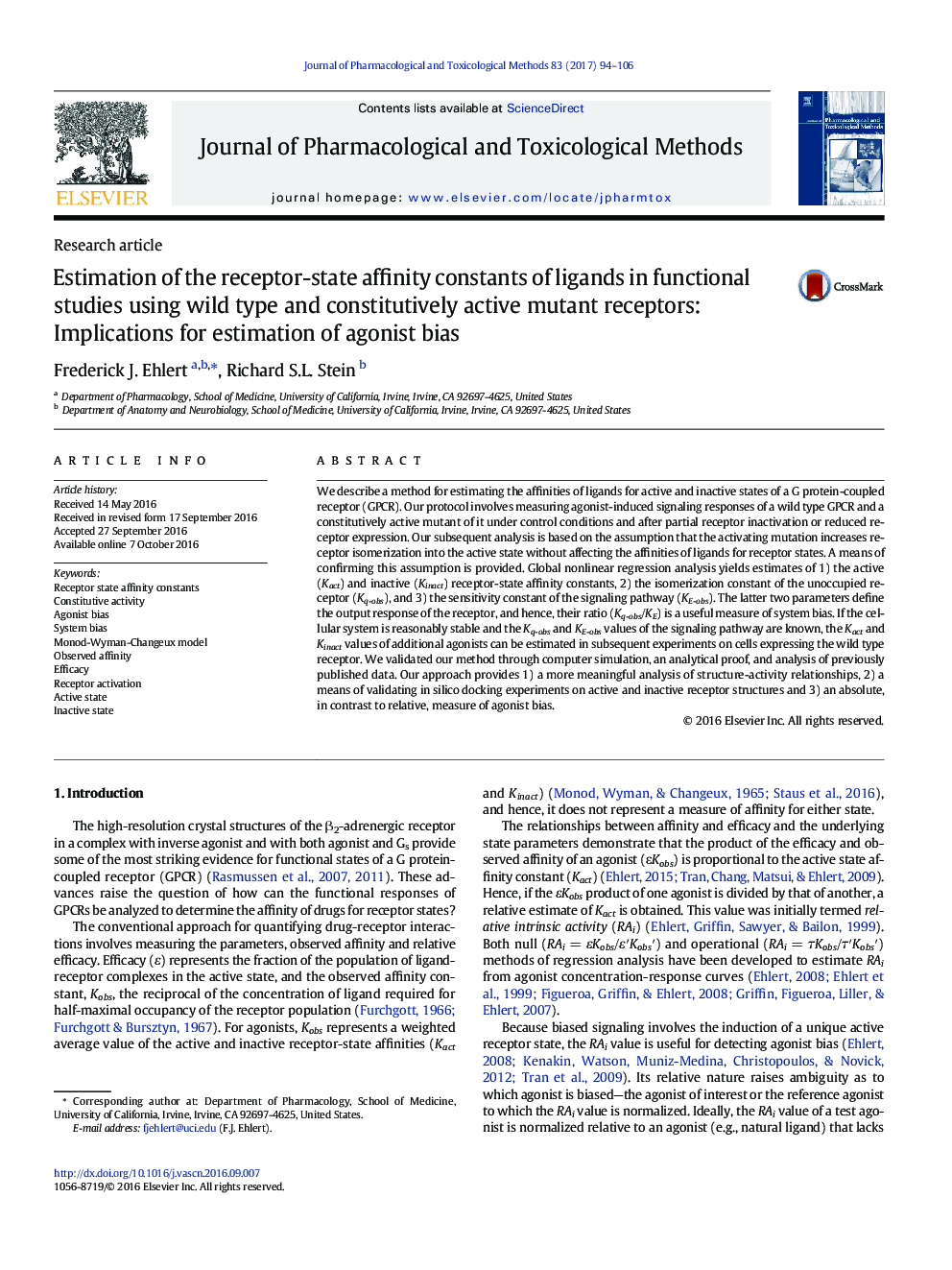| Article ID | Journal | Published Year | Pages | File Type |
|---|---|---|---|---|
| 5556584 | Journal of Pharmacological and Toxicological Methods | 2017 | 13 Pages |
We describe a method for estimating the affinities of ligands for active and inactive states of a G protein-coupled receptor (GPCR). Our protocol involves measuring agonist-induced signaling responses of a wild type GPCR and a constitutively active mutant of it under control conditions and after partial receptor inactivation or reduced receptor expression. Our subsequent analysis is based on the assumption that the activating mutation increases receptor isomerization into the active state without affecting the affinities of ligands for receptor states. A means of confirming this assumption is provided. Global nonlinear regression analysis yields estimates of 1) the active (Kact) and inactive (Kinact) receptor-state affinity constants, 2) the isomerization constant of the unoccupied receptor (Kq-obs), and 3) the sensitivity constant of the signaling pathway (KE-obs). The latter two parameters define the output response of the receptor, and hence, their ratio (Kq-obs/KE) is a useful measure of system bias. If the cellular system is reasonably stable and the Kq-obs and KE-obs values of the signaling pathway are known, the Kact and Kinact values of additional agonists can be estimated in subsequent experiments on cells expressing the wild type receptor. We validated our method through computer simulation, an analytical proof, and analysis of previously published data. Our approach provides 1) a more meaningful analysis of structure-activity relationships, 2) a means of validating in silico docking experiments on active and inactive receptor structures and 3) an absolute, in contrast to relative, measure of agonist bias.
